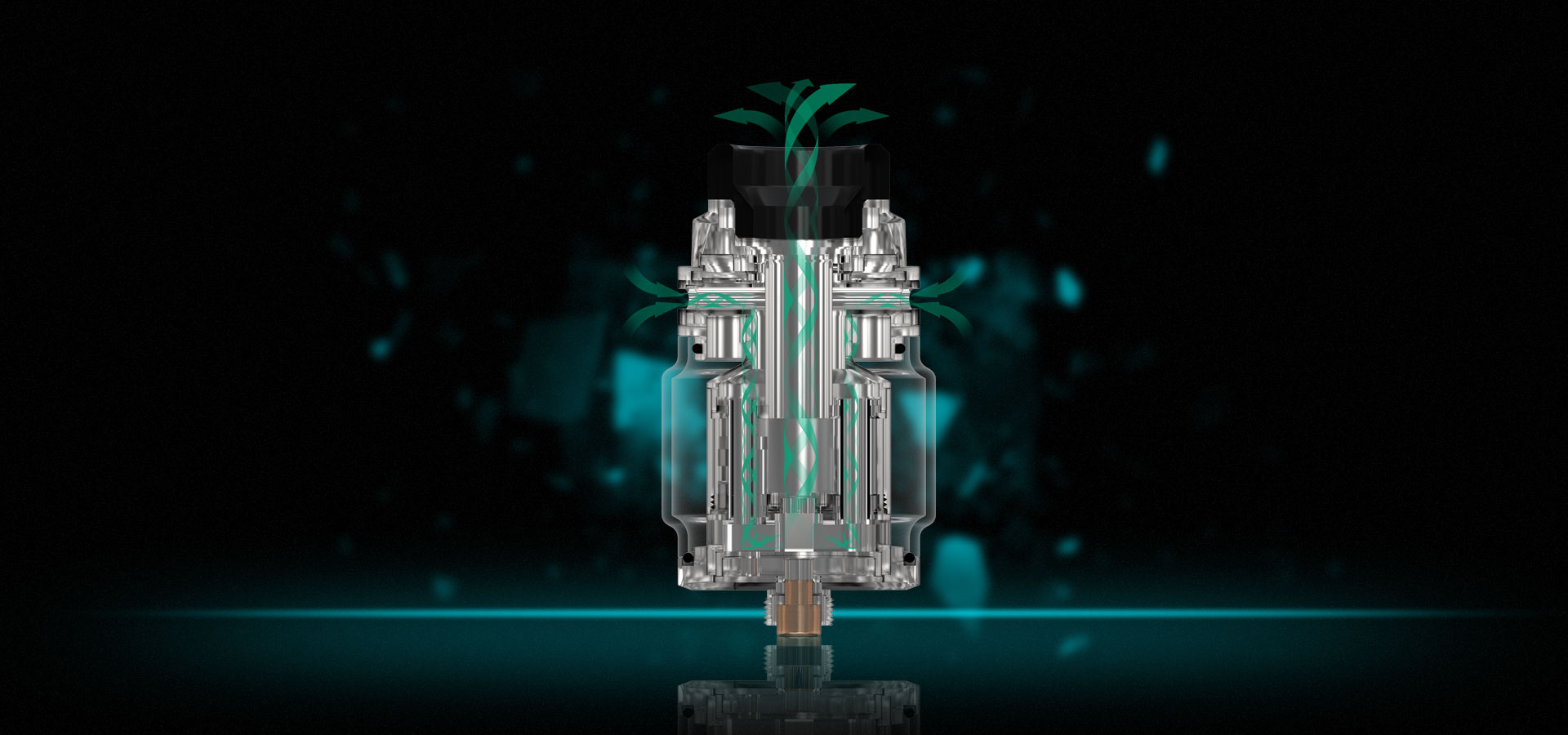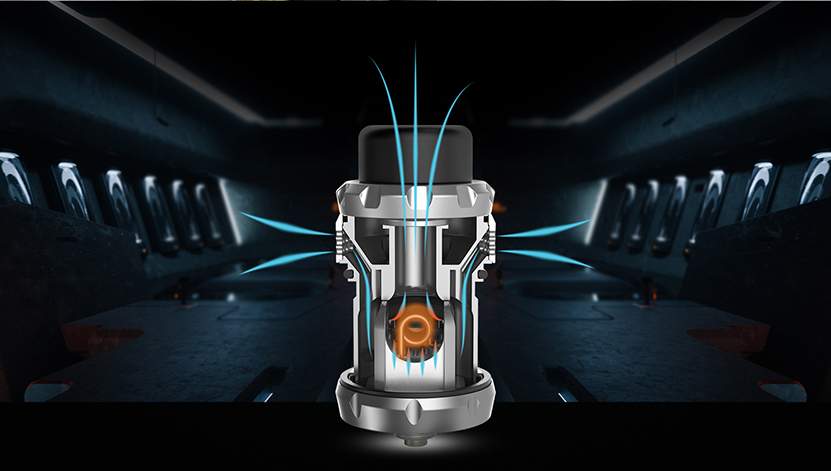You are using an out of date browser. It may not display this or other websites correctly.
You should upgrade or use an alternative browser.
You should upgrade or use an alternative browser.
Newb RTA Blotto, Wasp, Gear, Destiny or ??
- Thread starter WalterMelon
- Start date
Lung Redemption
Postman
- Joined
- Jun 5, 2018
- Messages
- 646
Destiny is hitting the spot for me, it's not a dual coil tank or dripper flavour but it's not massively off and guzzling a fraction of the juice. Swings and roundabouts though... (it's a great deck to build on to).
WalterMelon
Initiate
- Joined
- Feb 21, 2021
- Messages
- 48
Destiny is hitting the spot for me, it's not a dual coil tank or dripper flavour but it's not massively off and guzzling a fraction of the juice. Swings and roundabouts though... (it's a great deck to build on to).
Between the 'Wotofo Gear" "OUMIER WASP NANO" "Augvape Drugga" "Dovpo Blotto" "Vandyvape KYLIN V2" I picked the Hellvape because I can spell mfr and model Name correctly

[joke], I like the drop in coil, seems like its easier to mount, the side airflow might be fine, but won't not be better than a bottom airflow, but it should make leaking a little less common. I've yet to make a one more tank. Gona get which ever of the onled listed that goes for the cheapest.
Last edited:
Squidgy
Achiever
- Joined
- Nov 12, 2020
- Messages
- 1,026
Top airflow tanks have more air traveling through the tank for a longer amount of time at higher pressure against gravity before contacting the coil. All of these things can cause muted performance. Both the design of a top airflow RTA, and the users coiling/wicking techniques have much tighter tolerances before performance is affected.
Intriguing theory, just out of curiosity, is this your own belief or have you picked this up from somewhere/someone else?
WalterMelon
Initiate
- Joined
- Feb 21, 2021
- Messages
- 48
WalterMelon said: ↑
Top airflow tanks have more air traveling through the tank for a longer amount of time at higher pressure against gravity before contacting the coil. All of these things can cause muted performance. Both the design of a top airflow RTA, and the users coiling/wicking techniques have much tighter tolerances before performance is affected.
Intriguing theory, just out of curiosity, is this your own belief or have you picked this up from somewhere/someone else?
[Edited; I tried to make this shorter]
I design tests pharmaceutical testing methods using a machine "GC-MS Headspace", vape tank design shares variables/principles as the headspace. Heat vaporizes a sample in a small glass chamber, as its mixed with gas and released/injected into the machine, I modify chamber volume, concentration, heat temperature, duration, air flow speed, pressure, duration, direction, intake diameter, output diameter, draw speed, etc.
3 important variables
1) if too much juice gets past the coil, in bottom AF it will leak out of the tank. In top AF it will change the the airflow path until it totally blocks it.
2)Heat rises: In bottom AF heat is introduced above the air, air then rises by itself. In Top AF as the tank gets warmer the harder the air next to or above the coil tried to go out of the intake (so more variability happens)
3) Air loses velocity the more times it turns and the longer it travels AND output pressure is the same as air intake pressure in both tanks. But in the bottom AF air only travels half the diameter of the tank and turns up. Top AF, air travel in and across, then turn down, go down the height, turn, go across the deck, turn up again to the coils. That about 4-5x more velocity loss. To compensate for that top AF tanks need more air coming in and at a higher pressure, both things can mute flavor. The design/coil setup/wicking have to make sure the same amount of vapor containing air makes it past the coil at the same velocity as a bottom AF tank. Metaphor: the Air in a Bottom AF is a car traveling 30mph coming to a full stop at a specific point "the coil", then air in a top AF is like a train traveling 60mph to come to a full stop at the same point. (if that makes sense)
Last edited:
feedtalefour
New Member
- Joined
- Feb 28, 2021
- Messages
- 2
I like the wasp nano but it's a bit small and can get warm with chunkier coils so perhaps the destiny might suit you better if you don't fancy the Kylin.
Mr Ripple
Legend
- Joined
- Jun 2, 2017
- Messages
- 14,826
What you've just done is think this needs to be over complicated so have come up with a theory based on a similar application.[Edited; I tried to make this shorter]
I design tests pharmaceutical testing methods using a machine "GC-MS Headspace", vape tank design shares variables/principles as the headspace. Heat vaporizes a sample in a small glass chamber, as its mixed with gas and released/injected into the machine, I modify chamber volume, concentration, heat temperature, duration, air flow speed, pressure, duration, direction, intake diameter, output diameter, draw speed, etc.
3 important variables
1) if too much juice gets past the coil, in bottom AF it will leak out of the tank. In top AF it will change the the airflow path until it totally blocks it.
2)Heat rises: In bottom AF heat is introduced above the air, air then rises by itself. In Top AF as the tank gets warmer the harder the air next to or above the coil tried to go out of the intake (so more variability happens)
3) Air loses velocity the more times it turns and the longer it travels AND output pressure is the same as air intake pressure in both tanks. But in the bottom AF air only travels half the diameter of the tank and turns up. Top AF, air travel in and across, then turn down, go down the height, turn, go across the deck, turn up again to the coils. That about 4-5x more velocity loss. To compensate for that top AF tanks need more air coming in and at a higher pressure, both things can mute flavor. The design/coil setup/wicking have to make sure the same amount of vapor containing air makes it past the coil at the same velocity as a bottom AF tank. Metaphor: the Air in a Bottom AF is a car traveling 30mph coming to a full stop at a specific point "the coil", then air in a top AF is like a train traveling 60mph to come to a full stop at the same point. (if that makes sense)
In reality all that makes no difference in vaping terms.
Unless you remove the part where the user pulls the air into the tank manually your explanation does not apply.
Jd_
Achiever
- Joined
- Apr 10, 2020
- Messages
- 4,825
After reading your post (and understanding it, believe it or not) it would seem to me that where the air enters the tank is much less a factor than the air output into the coil and whether or not the air gets heated while its waiting in the chimney to be inhaled, because, remember, we r not vaping in a vaccuum. The air is already in the tank when u start a drag.[Edited; I tried to make this shorter]
I design tests pharmaceutical testing methods using a machine "GC-MS Headspace", vape tank design shares variables/principles as the headspace. Heat vaporizes a sample in a small glass chamber, as its mixed with gas and released/injected into the machine, I modify chamber volume, concentration, heat temperature, duration, air flow speed, pressure, duration, direction, intake diameter, output diameter, draw speed, etc.
3 important variables
1) if too much juice gets past the coil, in bottom AF it will leak out of the tank. In top AF it will change the the airflow path until it totally blocks it.
2)Heat rises: In bottom AF heat is introduced above the air, air then rises by itself. In Top AF as the tank gets warmer the harder the air next to or above the coil tried to go out of the intake (so more variability happens)
3) Air loses velocity the more times it turns and the longer it travels AND output pressure is the same as air intake pressure in both tanks. But in the bottom AF air only travels half the diameter of the tank and turns up. Top AF, air travel in and across, then turn down, go down the height, turn, go across the deck, turn up again to the coils. That about 4-5x more velocity loss. To compensate for that top AF tanks need more air coming in and at a higher pressure, both things can mute flavor. The design/coil setup/wicking have to make sure the same amount of vapor containing air makes it past the coil at the same velocity as a bottom AF tank. Metaphor: the Air in a Bottom AF is a car traveling 30mph coming to a full stop at a specific point "the coil", then air in a top AF is like a train traveling 60mph to come to a full stop at the same point. (if that makes sense)
Also, it assumes that in a bottom airflow tank the air is hitting the coil just as hard, if not harder, than a top airflow tank with wide inner air outlets, in which case the airflow suction will only be as strong as the strength of your inhale.
All this really amounts to is the fact that the innards are way more a factor than where the air enters.
One other thing to consider. The air rushing through the tank on a top airflow also helps cool the chimney and the tank as a whole.
Doing a thought experiment in my head, if u moved the bottom afc of the destiny and put it on top, then piped the air directly to its side air oulets (in the augvape intake style for example) i expect they would vape exactly the same.
Last edited:
WalterMelon
Initiate
- Joined
- Feb 21, 2021
- Messages
- 48
unpressurized air in the tanks isn't only helping matters for the first micro-seconds. There's is turbulence and head pressure loss to account for. Actual experiment, grab a long plastic drinking straw, seal your lips around it and try to breath for 60 seconds. Then cut the straw, and try to breath with a 1" section of it... it will be the same size opening, short straw will be uncomfortable, but long straw will start feeling like death, youll need to take harder longer breaths and it will still not be enough.After reading your post (and understanding it, believe it or not) it would seem to me that where the air enters the tank is much less a factor than the air output into the coil and whether or not the air gets heated while its waiting in the chimney to be inhaled, because, remember, we r not vaping in a vaccuum. The air is already in the tank when u start a drag.
Also, it assumes that in a bottom airflow tank the air is hitting the coil just as hard, if not harder, than a top airflow tank with wide inner air outlets, in which case the airflow suction will only be as strong as the strength of your inhale.
All this really amounts to is the fact that the innards are way more a factor than where the air enters.
One other thing to consider. The air rushing through the tank on a top airflow also helps cool the chimney and the tank as a whole.
Doing a thought experiment in my head, if u moved the bottom afc of the destiny and put it on top, then piped the air directly to its side air oulets (in the augvape intake style for example) i expect they would vape exactly the same.
The destiny thought experiment, would have the same issues. For it to feed from the top and have the same size opening at the coil, the piped have to get wider as the go further out (they could be very wide throughout and choke off righ at the coil, but that will create restrictiveness.
That's what's going on with the intake channels stay the same width, but closes off the flow when channels become one at the coil)

The Kylin M does it with the least impact to airflow performance: air flow enters wide channels, get narrower as it travels, both the funneling effect and the slope compensate for the longer path and fighting heat, It also moves with minimal turning so no extra turbulance... perfect design in terms of not impacting air flow/pressure. It's flaw is air only is moves a cross the a portion of the coil.
Its a mesh tank so that's not really an issue, but this was how most top airflow coil tanks worked years ago. Those did't bother carefully accounting for the tile and funneling.
The Kylin line in general is particularly good at top airflow design V2 Mini has that a ton of air coming in and able to access the coil from the bottom and/or sides, so it adapts to the different conditions beautifully even a little flooding, makes it a side air feel system like the destiny. Even with this near perfect design, you can see coil build is very picky; too low, air rushes past without hitting the coil, too high, too much air is coming in the bottom, too small and too much air goies in, too big and it becomes too tight... do it perfect and you can see why it's so loved.

...all of these tanks are more complex designs than bottom airflow.
but, this is all theory applied from a different concept, so I can be 100% wrong.
Off topic, but might as well put it here. One cool thing we use in the lab, instead of cotton wicks, we use glass wool. It's glass, spun so finely is looks/feels like cotton. No burning possible. BUT if you touch it enough without gloves, your hands will be bleeding from millions of tiny slices from the soft fluffy glass.
Similar threads
- Replies
- 0
- Views
- 124
- Replies
- 0
- Views
- 85
- Replies
- 11
- Views
- 2K











